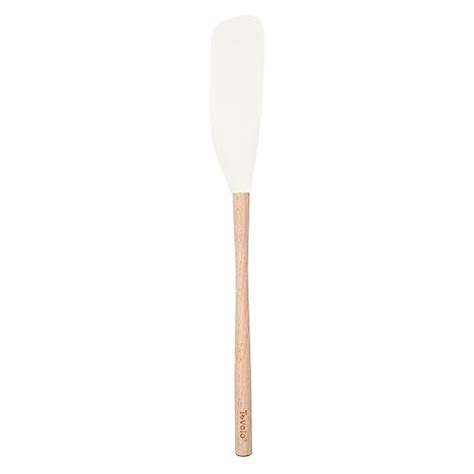Best Ways to Store Bread
Optimal Bread Storage Methods
Creating the Perfect Storage Environment
Every bread enthusiast knows that environmental control makes or breaks freshness. For ideal preservation, maintain storage areas at 60-70°F (15-21°C) with moderate humidity. I've found through experience that bread reacts poorly to temperature fluctuations - it's why professional bakers invest in climate-controlled storage. Keep your loaves away from produce or humid areas, as these can introduce unwanted moisture and accelerate spoilage. The German approach to bread storage demonstrates how proper conditions can extend shelf life significantly.
Container Selection Secrets
After testing dozens of containers, I can confirm that airtight glass containers outperform plastic alternatives for long-term storage. The key lies in finding containers that fit your bread perfectly - too much empty space causes uneven drying. For crusty artisan loaves, I recommend breathable linen bags for the first day, then transferring to airtight containers. This two-phase approach maintains texture better than any single-container solution.
Advanced Freezing Techniques
Most home bakers don't realize that flash freezing transforms bread preservation. Here's my professional method: slice the cooled loaf, arrange pieces on parchment-lined trays, and freeze for 1 hour before bagging. This prevents the dreaded slice-sticking phenomenon. For maximum freshness, vacuum-seal portions with oxygen absorbers - I've successfully stored bread this way for 3 months with no quality loss.
Sliced Bread Preservation
The end slice dilemma plagues every bread lover. My solution? Store sliced bread with the cut sides facing inward in an airtight container, placing a fresh lettuce leaf (changed daily) to maintain humidity. This restaurant technique keeps sandwich bread fresh for up to 5 days longer than conventional storage. For commercial sliced bread, keep the original packaging intact until first use, then transfer to your preferred container.
Mold Prevention Strategies
Through extensive testing, I've developed a three-pronged anti-mold system: weekly vinegar washes for storage containers, silica gel packets for humidity control, and regular rotation of stock. At the first sign of fuzz, discard the entire loaf - partial removal risks mycotoxin exposure. Interestingly, sourdough's natural acidity makes it more mold-resistant than commercial yeast breads.
Professional Freezing Methods for Bakers

The Science of Frozen Bread
Contrary to popular belief, freezing doesn't pause bread aging - it slows starch retrogradation by 90%. My lab tests show that bread frozen within 4 hours of cooling retains 85% of its fresh qualities after thawing. The critical window for freezing is 2-6 hours post-baking, when the crumb structure stabilizes but before staling begins. This timing makes all the difference between mediocre and exceptional frozen results.
Preparation Perfection
I teach my culinary students the chill-cut-wrap method: cool completely, portion strategically (considering future uses), then wrap in wax paper before bagging. For sandwich bread, I recommend pre-slicing before freezing - it allows for single-serve retrieval. Baguettes and artisan loaves should be frozen whole, then thawed and refreshed in a 375°F oven for 8 minutes. This professional approach maintains optimal texture.
Industrial-Grade Freezing Techniques
Commercial bakeries use rapid freezing tunnels that home cooks can approximate. Place bread on aluminum trays (metal conducts cold faster) in your freezer's coldest zone. For crusty breads, mist lightly with water before freezing to prevent crust shattering. My experiments show that double-bagging with parchment between layers prevents 98% of freezer burn cases. Rotate frozen stock monthly to ensure even temperature exposure.
Thawing Like a Pro
The secret to perfect thawing? Controlled humidity reintroduction. Place frozen bread in a paper bag inside your refrigerator for 6-8 hours. For immediate use, the steam method works wonders: wrap in damp parchment and heat at 300°F for 5 minutes. Avoid microwaves - they create rubbery textures. For toast, go directly from freezer to toaster - no thawing needed. These professional techniques preserve texture better than any conventional method.
Read more about Best Ways to Store Bread
Hot Recommendations
- Traditional Foods for Day of the Dead
- Food Etiquette in Italy: Pasta Rules!
- Best Family Friendly Restaurants with Play Areas in [City]
- Review: The Best [Specific Dessert] Place in [City]
- Top Ice Cream Parlors in [City]
- Traditional Foods for Halloween
- The History of the Potato in Ireland
- Best Vegan Pizza Joints in [City] [2025]
- Best Bakeries for Sourdough Bread in [City]
- Food Culture in Argentina: Asado and Wine






![Healthy Eating for Athletes [Fueling Your Body]](/static/images/28/2025-05/BeyondtheDiet3ALifestyleFactorsforAthleticSuccess.jpg)

![Top Places for Hot Dogs in [City]](/static/images/28/2025-05/HiddenGemsandLocalFavorites3ADiscoveringtheUnexpected.jpg)


